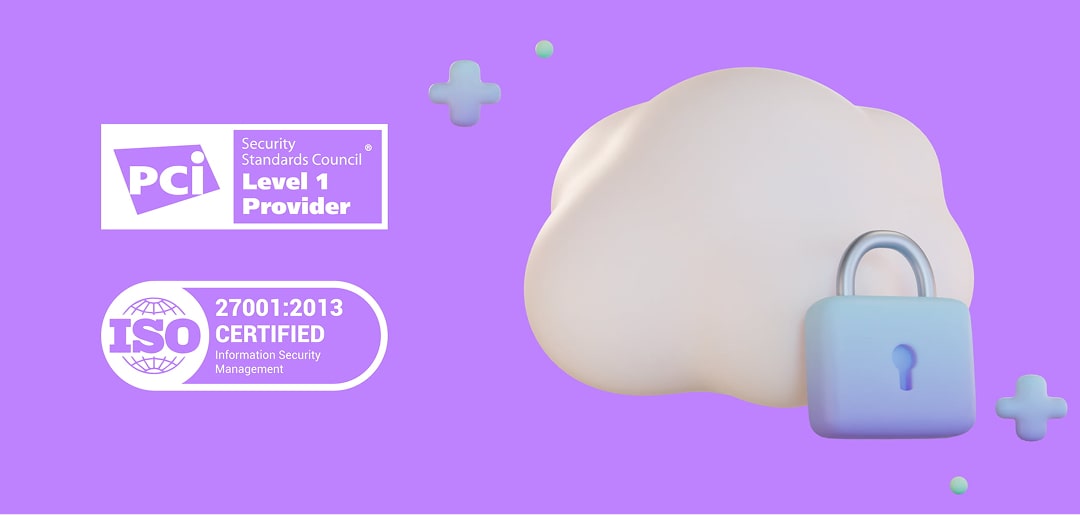Outstaffing and outsourcing help businesses expand with young and experienced professionals without spending resources on hiring and onboarding.
Just like outsourcing, outstaffing provides companies with the opportunity to reinforce themselves with experienced tech teams when needed. What are the other benefits of the outstaffing model, and how can businesses leverage it for intense growth?
Key Benefits of the Outstaffing Model
Flexibility

The software market is expected to reach $800 billion in revenue by 2025. With profits, grow expectations, demand, and the need for flexibility. Those market players, who know how to scale tech teams faster than competitors and in a stress-free way, can catch the burning opportunities to become tech unicorns.
Outstaffing providers take over the IT staff augmentation and unite businesses and tech professionals. By utilizing the outstaffing model, IT management gets rid of the need to set up additional working stations and spend resources on recruitment, hiring, onboarding, operations, retention, and regular check-ins with the team.
IT outstaffing model allows tech companies not only to reduce the level of pressure, but to put more attention into building an efficiently flexible work environment, which helps 73% of professionals increase their satisfaction with work.
Functionality
What is one of the most noticeable pros of IT outstaffing? IT outstaffing model is suitable for a bunch of project types. A company can delegate hiring and retention of Customer Support, IT Support, Marketing, Design and Development. With our 13 years in the outstaffing market, we can seamlessly integrate outstaffed teams in the business flows of numerous industries, from Ecommerce or Healthcare to Blockchain or Data Engineering.
Hot advice from Outstaff Your Team: Pay attention if your outstaffing provider has expertise with your team roles and within your domain. There is a unique strategy to attract top performers in each niche.
To launch a successful hiring campaign, your external HR partner should:
-
Study the typical behavior of the specialists — their preferred communication channels and communication code;
-
Analyze talent market trends relevant specially for your position;
-
Be familiar with the industry standards to check the compatibility of your candidates with your vacancy.
Lifehack: Outstaffing Model Allows Global Hiring
IT staffing services remove geographical barriers for all the types of IT outstaffing — a long-term partnership or a shorter collaboration, hiring one specialist or the whole team. An experienced outstaffing partner can hire team players in different parts of the world. The outstaffed team works remotely and synchronizes via reliable communication channels.
We can highlight the 2 benefits of IT the outstaffing model related to global reach: cost-effectiveness and access to a broader talent pool.
Optimal Budget
The average cost of hiring a developer is:
Anywhere between $137 and $173 thousand a year in the USA.
Around $98 thousand in Germany.
Around $82 thousand in the UK.
IT outstaffing model allows tech companies to reduce the cost of expanding and running their tech teams, while maintaining the same high quality of product development and knowledge they require..
It is also possible to fit into the limited budget, as you have to sign only one outstaffing agreement with your talent provider. That means you don’t start official relationships with tech teams you hire, while your outstaffing company does it instead of you. So, you avoid additional expenses related to hiring:
Lawyers who can help you with the local regulations;
Payroll team, which arranges paying compensations and local taxes.
Diverse Backgrounds and More Alternatives
Speed is also considered to be among the pros of IT outstaffing model. The hiring process is faster as there are naturally more matching specialists to pick from if we are talking about the whole world, not some country or city. Members of international teams often possess diverse skill sets, areas of expertise, and industry knowledge. This diversity can stimulate a rich exchange of ideas, which fosters problem-solving and innovation. Moreover, it can aid in global business expansion by providing valuable insights into local markets, customer preferences, and cultural nuances.
5 More Unique Pros of IT Outstaffing
High Level of Expertise
Outstaffing companies aim to look for professionals with a specific set of skills. They know how to look for, communicate with, and test the level of knowledge of tech professionals. Thus, they provide a smooth candidate experience, which helps retain up to 63% of candidates.
Knowing all the requirements of the market, an outstaffing team can retain seasoned tech professionals. In general, their high level of expertise not only helps businesses, but sets high standards for the industry as a whole.
It’s worth noting that with those seasoned pros, you can also accelerate the time to launch a product or service and get your return on investments faster.
Commitment of Tech Teams
To build loyal teams, outstaffing companies examine the cultural fit of candidates at the first hiring steps. They evaluate hard and soft skills to take a balanced and unbiased hiring decision. Talent Acquisition Specialists from outstaffing companies collect all the data generated during candidate selection in HRIS (human resources information system) to analyze all the interactions with candidates and forecast their journeys within the projects. Moreover, such a practice ensures positive candidate experience and warm feedback from hires easily attracting… new hires, of course. Thus, you can add seamless talent delivery to the pros of IT outstaffing model.
Smart outstaffing teams continue to build trust not only for recruiting purposes. They invest huge effort in post-hiring outstaffing process and reduce turnover risk, regularly providing tech specialists with attentive support. Thus, it is much easier for developers, designers, and other IT professionals to focus on their core tasks and stay satisfied with their progress on the project and the team atmosphere overall.
The Fullest Control — a Pearl Among the Pros of IT Outstaffing
One of the advantages of outstaffing is a dedicated team. This is the only one of the IT engagement models similar to an in-house team in terms of reporting. Your new hires report directly to you and are closely integrated with your existing team through mutual messengers, project management tools, and group calls.
That’s why the benefits of the outstaffing model let businesses fully control the team’s professional development, work, and results. This allows tech companies to build the relationships as they would with in-house developers and retain full control over the team’s work.
With outstaffing being a new niche, businesses often opt for outsourcing, which limits businesses in their ability to control the development process. Outsourced teams take on the development with agreed-upon resources. Outstaffing provides companies with as much control over the team as they require or want to have. It is a better option for those who want to have full control over the project and direct impact on what’s going on inside the team.
Risks Coverage
The outstaffing agreement should include risk coverage. For example, if some developer cannot continue their work on the project because of any reason, outstaffing agency provides a replacement guarantee.
The Possibility to Focus on the Business Strategy

66% of large businesses are more likely to outsource and outstaff than small ones, as large companies need to focus on their business strategy, which takes much more resources. Outstaffing allows different companies to focus on their business goals and strategy without having to worry about expanding and training their tech teams. They can also do it without having to worry about the security of their project and the safety of their data. Outstaffing with a professional team provides multiple levels of security.
For example, Outstaff Your Team is GDPR-compliant and ISO certified. Data security is in our corporate DNA.
If a business lacks budgeting, staff, or management, outstaffing benefits help you set up the recruitment process, onboard the tech team, provide ongoing HR support and make sure there are no roadblocks for streamlined and safe collaboration.
Want to scale your tech team? Write to us at hi@outstaffyourteam.com, and we’ll get back to you with a personalized quote for your particular project.
FAQ
What is the difference between outstaffing and outsourcing?
Outsourcing is contracting a third-party company or organization to handle specific tasks or services, often unrelated to the client's core operations. The client retains limited control over the processes and specialists involved. In contrast, an outstaffing basis is hiring dedicated team members through an agency. Such hires work exclusively on the client's projects as if they were part of the client's in-house team. The most noticeable of the pros of IT outstaffing — client controls literally everything.
What are the components of a reliable outstaffing agreement?
The right IT outstaffing agreement should include the scope of work, project timelines, roles, and responsibilities of the outstaffed specialists, payment terms, intellectual property rights, confidentiality clauses, termination conditions, and any specific performance metrics. This legally binding document ensures clarity and defines the working relationship between a company and the external IT professionals it hires. By signing it, you facilitate smooth collaboration and project execution and access all the benefits of IT outstaffing model.
Is outstaffing the same as freelancing?
Outstaffing and freelancing differ pretty much. Outstaffing is when an external agency becomes an Employee of Record for some client company. The agency professionally hires specialists, manages HR matters and hiring documents. Pros of the outstaffing model: 1) a client company fully controls the work of the outstaffed team members; 2) hires become a considered part of the company's team. Freelancing is when independent professionals offer their services directly to clients. Freelancers have more autonomy, working on various projects for different clients, setting their rates, and managing their schedules independently. Clients generally have less direct control over freelancers.
Ann Kuss is the CEO at Outstaff Your Team. After 11 years of expertise in building remote tech teams for startup unicorns and global tech brands, Ann decided to lead a new venture aiming to reinvent the way international tech teams scale. Throughout her career, Ann hired specialists for countless tech positions from more than 17 countries on all major continents. Ann graduated from Kyiv-Mohyla business school, is an MIM Kyiv alumna, and regularly takes part in mentorship programs for junior tech talents. Ann actively promotes knowledge sharing and curates Outstaff Your Team blog strategy, preferring topics that solve practical needs of IT leaders. She believes that structuring business flows (including hiring) is a well-planned journey with predictable and successful outcome.



